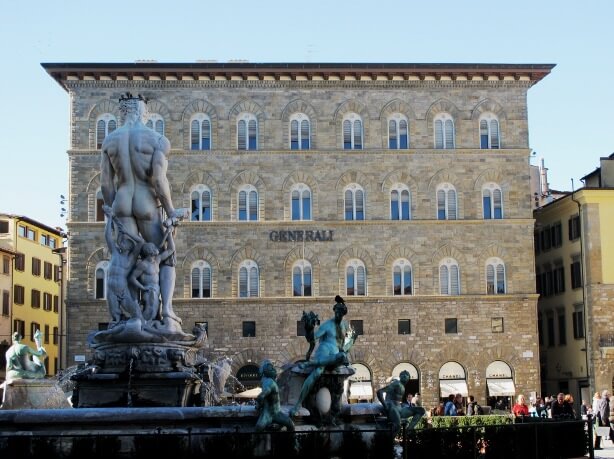
If you go to Florence, you may be overwhelmed by all the historic sights and abundance of artistic treasures. You definitely don’t need to see all of them to learn about the Renaissance, so I’d like to show you two places that you may not have heard much about but are possibly the best examples of Renaissance architecture in Florence. The first is the Pazzi Chapel, in the cloisters of Santa Croce, the church in the center background of the photo below. The second is Santo Spirito, the church in the foreground of the photo below.
Let’s begin with a bit of background.
Renaissance architecture was the vision of Filippo Brunelleschi, whose ability to innovate and interpret Renaissance ideals in architecture made him the leading architect of the age. He is responsible for the designs of the Early Renaissance (until 1446 when he died) and therefore laid the foundation for how architecture would develop in the rest of the period and beyond. His most famous design is the the dome of Santa Maria del Fiore.
One of the objectives of the Renaissance was to reinvent the ingenuity of Greek and Roman art from about 1500 years before. Brunelleschi traveled to Rome early on and meticulously studied Roman architecture. His designs broke away from the medieval traditions of pointed arches, vaulting, and the use of gold and mosaics. Instead, he used simple, classical designs based on basic geometric shapes. His work and influence can be seen all over Florence, but the Pazzi Chapel and Santo Spirito are two of his greatest achievements.
The Pazzi Chapel
The Pazzis were the second wealthiest family in Florence after the ruling family, the Medici. They are famous partly for the Pazzi conspiracy in which they tried to overthrow the Medici by murdering one of the Medici brothers during mass in the Duomo. However, before that all happened, the Pazzis had this chapel constructed to make a big impression, to show their wealth and power, not just to God but also to everyone else, including the Medici.
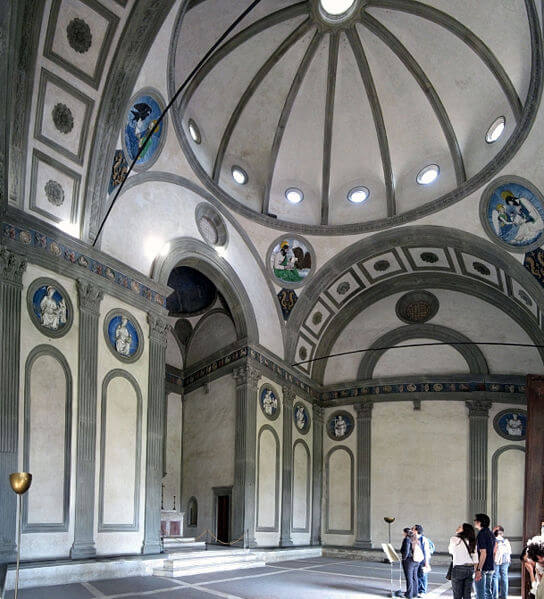
The chapel shows Brunelleschi’s vision of Renaissance architecture in two main ways. First, his use of shapes: here we see the forms of Classical Roman and Greek architecture reinterpreted by Brunelleschi. Geometric shapes dominate in rounded arches, patterns of rectangles and squares, the repeated use of circles, and the circular dome.
Second, the chapel is very simple. The repetition of shapes and simple colors make it harmonious. As in his other work, Brunelleschi chose just white and gray–the gray is pietra serena (“serene stone”) for the ribs of the dome, the pilasters, the arches, and other details of the space . (The additional colors of the medallions are the work of Lucca della Robbia, a Renaissance sculptor famous for his terracotta reliefs.)
Santo Spirito
When I studied Italian Renaissance art in Florence, I stayed just down the street from this church and walked by it every day. It sits on the Oltrarno side of the Arno River, across from the historic center of Florence, and therefore is less visited than many of Florence’s other churches. Every time I went inside, I was practically alone. However, this church is an outstanding example of Renaissance church architecture.
The exterior used to be painted but now bears just a plain front with some curves. I like it that way. Its plain exterior reinforces the neighborhoody feeling of the church and its square.
As you go inside, you encounter echoes of ancient Roman architecture. Brunelleschi used a simple three-aisle system from early Christian basilicas in Rome: we see the nave and two side aisles, all flanked by powerful Corinthian columns that could be straight out of Rome. The arches are perfectly rounded, reflecting his love of geometric shapes. The color choices of white and gray stone and a plain floor give the church a simple look despite the later addition of an elaborate altar.
Want to learn more?
Brunelleshi made his mark on Florence in many other places. Here are some of the other great examples of Renaissance architecture that you may want to include during your visit there:
- Palazzo Medici-Riccardi (highly recommended)
- San Lorenzo & its Old & New Sacristies (the latter designed by Michelangelo)
- Piazza della Santissima Annunziata
- Ospedale degli Innocenti
- Palazzo Strozzi
- The dome of Santa Maria del Fiore
(Top image is mine; others Creative Commons license from Wikipedia)

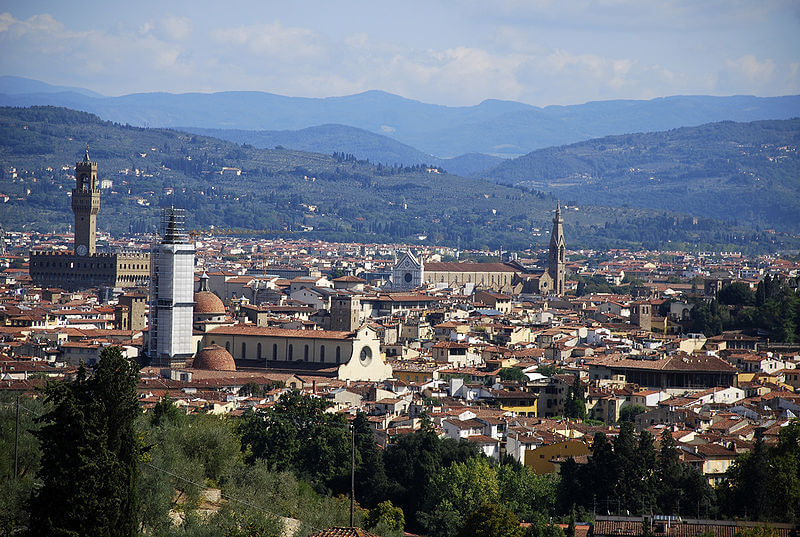
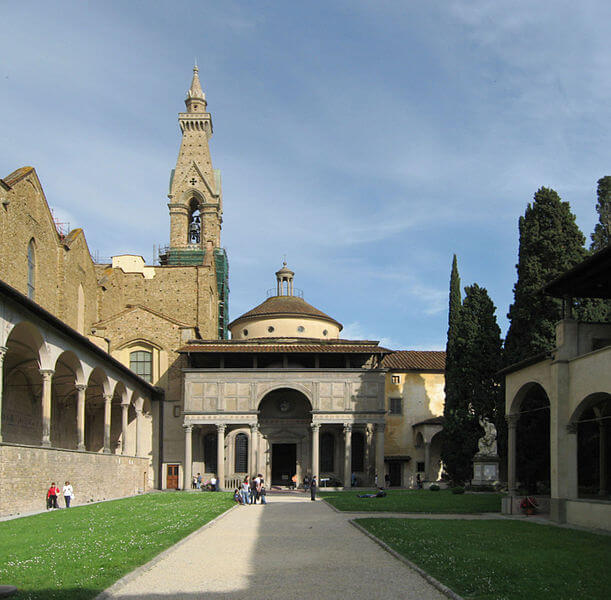
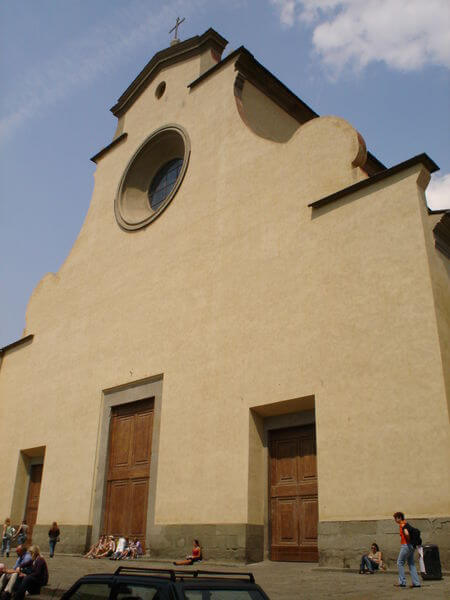
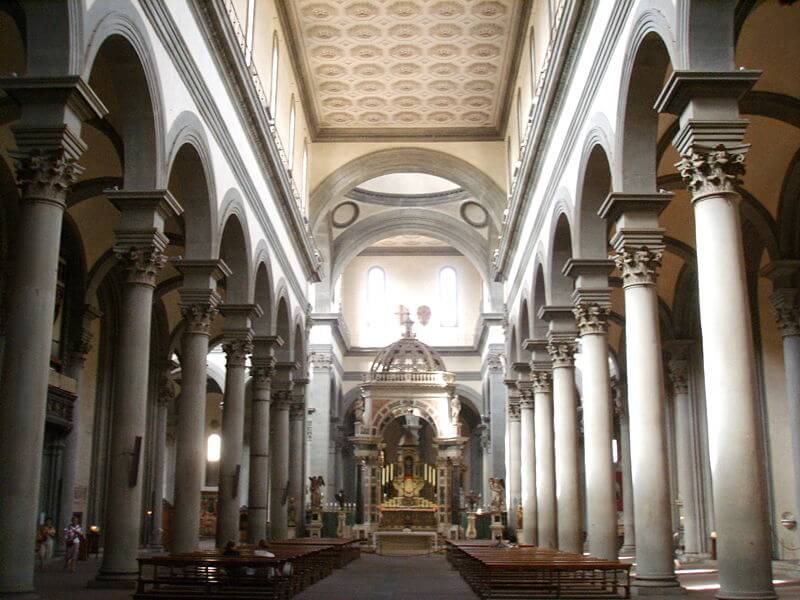
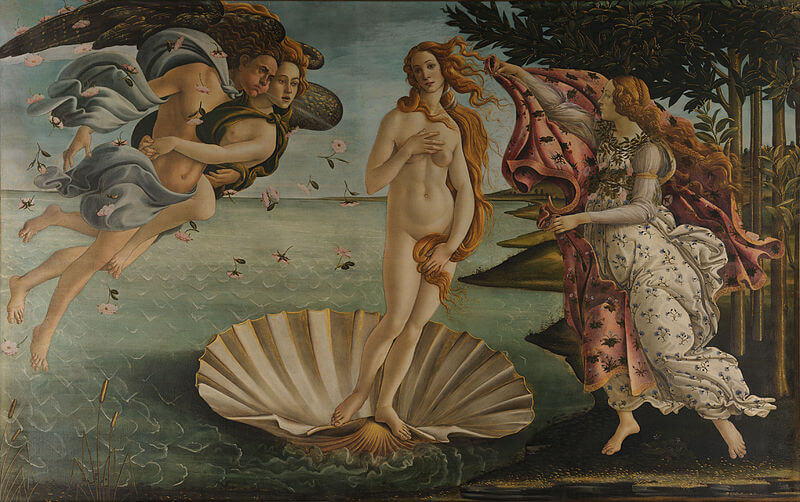
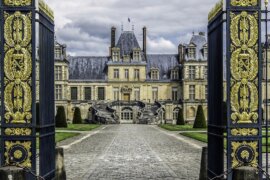
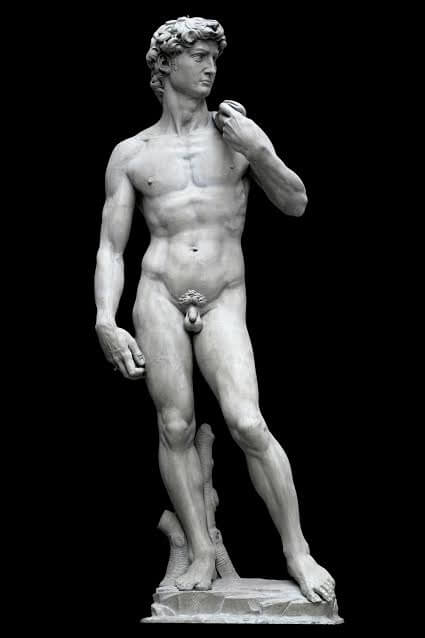
this post is so relevant since we will be there in less than 2 months! I’ve been to florence many times, but I have not yet visited several of the places you mention. We are taking a quick day trip into florence from the hills outside, so I need to prioritize. duomo of course. but now I hope we can also visit the pazzi chapel and santo spirito. Have you read “The Sixteen Pleasures” by Robert Hellenga about the mud angels in 1966 who came to FI to save the city’s art from the arno floods? based on your interest in florence and art, you would love it. Also, Brunelleschi’s Dome is a wonderful read. Thanks for this great information.
How exciting that you will be in Italy so soon. I hope you enjoy these places if you end up visiting them. About the book, I’ve read it before and actually started rereading it a couple weeks ago. I can’t get enough of books set around there, but unfortunately, there aren’t many really good ones.
What a wonderful post full of striking images from one of my favorite cities in the world. I too suffer from Italy on the brain but I believe it’s an affliction resulting from our shared passion for all things Renaissance and some of the finest architecture in the world. Thanks for taking me back!!!!
Wow, I didn’t know you were a fan or architecture in Florence?! Just kidding! 🙂
Beautiful photos! While I’ve been to Florence, I’ve not spent enough time studying the buildings there. Definitely one of the greatest cities in the world for art.
Pazzi Chapel was a favorite from my Renaissance architecture class. I prefer the simplicity of Brunelleschi over the later Renaissance buildings. And I love the plain front of Santo Spirito, it’s almost modern.
If only our neighborhood church, built in the Italianate style favored in the early 20th century, left the interior white and gray instead of the horrific butter yellow faux finish with turquoise roundels, bosses, and vaults. Yikes.
I also prefer the simplicity of Brunelleschi. It allows you to really experience the space, I think.
LOVE that della Robbia blue…to me, that is Florence.
I love that you identify Florence with that blue. It is true– the della Robbia style decoration found around the city is special.
I absolutely love Florence! By far my favourite Italian city. And I like the wall of Santo Spirito bare too. It’s almost too bare. Makes you do a double take and really notice it 🙂
Hi Jenna!
Loved your post. I’m going to be visiting Italy in October. Unfortunately, I don’t have much time and can spend only one and a half day in Florence. Thanks for recommending many great places in Florence 🙂
Can you maybe give me your top 10 in and around the city?
Thanks!
Ooh, top 10? That’s tough because I think it depends on what you like to do. If you are not big on museums, skip them. Try a tour with Walks of Italy or Context Travel since you don’t have much time. A walk to San Miniato is always worth it, and try to catch the sunset or sunrise on the Ponte Vecchio.